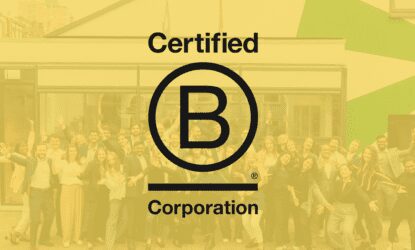 A guide to carbon offsetting
A guide to carbon offsetting
Note: Check out our 2025 blogs, which provide an updates overview of proposed changes to SBTi net zero standard v2 and cover the latest trends across sectors around SBTi commitment.
“Incorporating SBTi-validated targets into your sustainability strategy is a great way to future-proof your investments, drive stakeholder engagement and improve relationships with business partners and consumers.”
Want to know more about SBTi-validated climate targets, the process of setting them and the benefits they can bring, from improved compliance to competitive advantages?
Read on for our expert insights.
What is the Science Based Targets initiative (SBTi)?
Keeping global warming below 1.5°C – as called for in the Paris Agreement – depends on collective action from a range of stakeholders, including governments and private institutions. The Science Based Targets initiative (SBTi) was created to facilitate this. Its role is to translate the 1.5°C target into data-based requirements and guidelines for companies and financial institutions to reduce their greenhouse gas (GHG) emissions.
How do SBTi climate targets work?
Science-based targets (SBTs) are emission reduction pathways or scenarios towards a goal that are created in line with the latest climate science, based on well-evidenced strategies to reach net zero targets. They provide a clear and practical roadmap for companies to play their part in limiting global warming to 1.5°C above pre-industrial levels while supporting a socially just transition to corporate net zero standards.
Setting SBTi-validated targets therefore ensures that your climate action policies and practices as ambitious and transparent as possible. As a result, incorporating these targets into your sustainability strategy is a great way to ensure that your investments maximise your company’s positive impact and drive engagement with business partners and consumers.
How do I set a science-based target?
The SBTi has designed the target-setting process to be as accessible as possible to companies, regardless of their industry or stage on the sustainability maturity journey. According to the SBTi guidelines, setting a science-based target involves five steps:
- Step 1: Commit
The first step for a company is to register its commitment by submitting a formal letter. By doing so, the company is recognised as ‘officially committed’ on the SBTi, CDP, UN Global Compact and We Mean Business websites. Typically, companies then have 24 months to develop and submit their targets for review and potential validation.
- Step 2: Set a baseline
A CO2 baseline inventory is a reference point used to measure and compare greenhouse gas emissions over time. It serves as the foundation for climate change mitigation efforts and helps organizations track their progress in reducing emissions. It will be your reference point for your SBT.
- Step 3: Set a target
Targets must be aligned with the latest SBTi criteria and sector-specific guidelines. The SBTi provides several resources to guide companies through this step, such as the SBTi Getting Started Guide, target-setting tools and the Procedure for Validation of SBTi Targets.
- Step 4: Submit
Once developed, the company submits its targets for review. The SBTi provides tailored submission forms and tools based on the type of target – whether it’s a near-term, net-zero or FLAG (Forestry, Land and Agriculture) target. Targets are reviewed by the SBTi’s technical experts, who verify that the targets meet their standards.
- Step 5: Communicate
Once a target has been validated, companies can communicate their commitment with stakeholders. To facilitate this, the SBTi publishes validated targets on its Target Dashboard, making them visible to the public. It also provides resources to support companies in communicating their new targets.
- Step 6: Disclose
To ensure transparency and monitor progress towards their targets, companies must disclose their emissions and report on their progress annually. This can be done through the CDP website, annual sustainability reports or other public platforms such as the company’s own website.
During the target reviewing process, your organisation will benefit from detailed feedback and support from the SBTi’s technical experts. They’ll ensure that your targets are both sufficiently ambitious and practical to implement.
This will help to deliver clearly defined pathways towards reducing your company’s GHG emissions, encouraging organisational alignment around shared climate goals.
What are the commercial benefits of setting a science-based target?
Setting SBTs can also bring several benefits from a competitive perspective. Sustainability regulations, such as the Corporate Sustainability Reporting Directive (CSRD), require companies to report accurately on their climate ambitions and performance. This means that setting SBTi-validated targets can facilitate compliance.
The clarity provided by setting actionable targets can also encourage companies to innovate to meet their obligations. In addition, clear and actionable sustainability strategies are becoming an increasingly important factor in investment decisions.1 Therefore, an SBTi-validated target (and the actions required to achieve it) can boost investor confidence in your company, unlocking access to capital and driving growth.
Moving from compliance to purpose with SBTs
Setting a SBT can bring many benefits beyond simplified regulatory compliance – helping to future-proof your strategy and improve relationships with employees, investors, customers and other stakeholders. They’re an essential tool for companies to drive concrete progress on their climate mitigation strategies, demonstrating their commitment to building a more sustainable future.
Want to find out more about setting and validate a Science Based Target ? Nexio Projects is here to support you throughout the process. Visit our Net zero and decarbonisation service page or contact our experts directly today!
Download our SBTi factsheet for the most recent updates and best practices on your decarbonisation journey.











